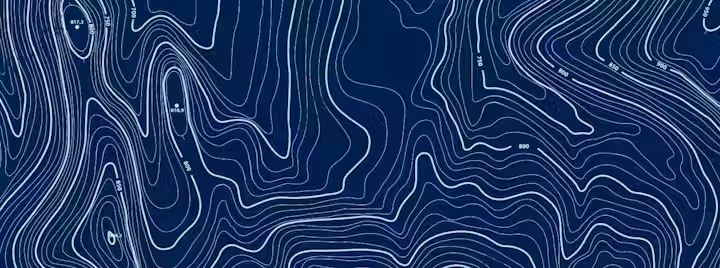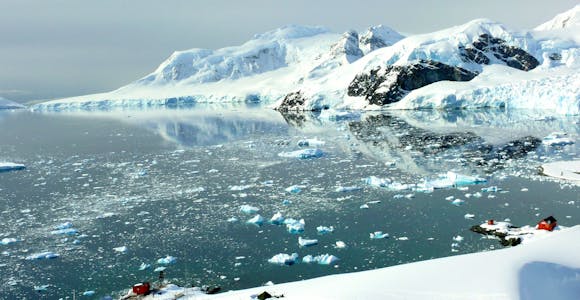
Antarctic Peninsula Cruises
The Peninsula is the classic way to experience Antarctica. Some of the best wildlife and most dramatic scenery can be found in this part of the Frozen Continent.
Discover MoreWildlife watching on an Antarctic cruise begins the moment you set sail, with graceful albatrosses accompanying your ship as you cross the Drake Passage. They're the perfect warm-up acts for one of the greatest wildlife destinations on the planet.
Antarctica may be covered in ice and snow, but the rich waters of the Southern Ocean that surrounds it means that its coastline is teeming with life, especially around the Antarctic Peninsula, the region most accessible to visitors.
Penguin colonies (particularly some of the enormous gentoo penguin colonies) are one of the biggest highlights of any trip, whether you’re visiting in breeding season or when there are chicks on the nest. Leopard seals keep guard on the ice floes while skuas and other seabirds wheel overhead.
Along the coastline there are ample opportunities to see whales, especially late in the season: encounters peak in February and March when fearless whales actively approach zodiacs and kayakers alike to politely enquire who the visitors are to their frozen kingdom.

A gentoo penguin, one of Antarctica's most iconic species
Price Match Promise - We’ll match any price you find elsewhere for the same trip
For anyone looking to turn their Antarctica trip into the ultimate wildlife experience, including South Georgia should be on the itinerary if at all possible. This subAntarctic island is commonly known as the Serengeti of the Southern Ocean for its unrivalled profusion of wildlife.
A trip here encompasses visits to king penguin colonies where the birds are counted in the hundreds of thousands, and beaches are dense with fur seals and elephant seals. Cruising past albatross colonies brings home the vast numbers of seabirds who make this island home, while whales can frequently be spotted in its waters.
South Georgia is that most precious of things in the modern world: an ecosystem judged to be in full recovery. Seeing wildlife in such vast numbers after a visit to the rusting remains of its old whaling stations is a truly inspiring reminder of nature’s powers of recovery.
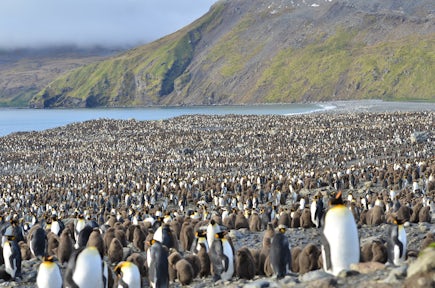
King Penguins in St Andrew's Bay, South Georgia

A naturalist guide shares her Antarctic knowledge
Expert naturalists make up an essential part of the expedition guiding team that accompanies you throughout your Antarctic cruise. Most ships will have several naturalists on board as they recognise that they are a key part of the wildlife experience.
These guides truly are experts in their fields. Many join polar cruise ships after working in Antarctica as biologists or run their own wildlife watching business during the winter season. As well as giving educational talks during the voyage about the wildlife you'll encounter, they'll accompany you on all landings and zodiac cruises to explain more about what you're seeing. Their keen eyes are often the first to spot interesting wildlife to help you point your binoculars in the right direction.
Whether you're trying to work out what species of albatross is gliding off the ship's bow or trying to get to grips with how penguins behave in a tightly packed colony, your one on one conversations with the naturalist guides with enrich your Antarctic wildlife experience enormously.

Chinstrap penguins on the Antarctic Peninsula
Brimming with personality and thoroughly undaunted by the humans that have travelled so far to see them, penguins are the undisputed scene stealers across Antarctica and South Georgia, especially when seen in noisy and smelly colonies, thousands of birds strong.
The Antarctic Peninsula offers three main species. Gentoo penguins, Adelie penguins and chinstrap penguins are all found here in large numbers, though if it’s the imposing emperor penguin you’re after, you’ll need to head to the Weddell Sea or even further south to the Ross Sea.
To add king penguins to the list, add South Georgia to your itinerary: their enormous colonies here are one of nature’s greatest spectacles. While there, you’ll also be able to spot the foppish-looking macaroni penguin, along with rockhopper and Magellanic penguins when you call in at the Falkland Islands.
The type of penguin encounters varies according to when you visit. In November you’ll catch plenty of mating behaviour, as well as penguins looking their finest against the still-fresh snow. Chicks start to arrive in late December, at their fluffiest in January and starting to fledge by February. If you want to guarantee penguin chicks no matter when you travel, consider adding South Georgia to your itinerary, where king penguin chicks are present throughout the year.

Humpback whale
Watching whales at close quarters is perhaps one of the most exciting wildlife experiences you can have anywhere in the world. The fact that such encounters can be commonplace in a region like Antarctica where they were so brutally hunted throughout the 20th century makes it even more special.
Humpbacks are the whales most often seen in Antarctica, followed by the much smaller minke whale. Both of these are often seen close to shore in the Peninsula. While at open sea, look out for fin whales – and keep your fingers crossed for rarer species like blue whales and sei whales. Humpbacks are increasingly seen in the waters around South Georgia: incredibly, the population here has almost completely recovered to its pre-whaling numbers.
If whales are high on your wish list, you’ll want to choose your travel time carefully. Sightings are less frequent in the early season while whales are still migrating south from the tropics, so travel after Christmas to increase the frequency of sightings. February through to the end of the season offers the very best encounters: humpbacks and minkes full of krill become curious and playful at this time, and it’s not unknown for them to approach tourists in zodiacs and kayaks: a close encounter you’ll never forget.

Leopard seal
Seals hauled out on an ice floe present a sight almost as iconically Antarctic as a group of waddling penguins. Weddell seals, crabeater seals and leopard seals are all commonly encountered. Leopard seals are usually found wherever there are penguin colonies to provide them with a meal – they’re highly inquisitive and often check out tourists cruising in a zodiac.
In the north of the Peninsula around the South Shetland Islands you’ll also find plenty of southern elephant seals and Antarctic fur seals – the pups of the latter, which appear in the new year, are a particularly delightful sight.
Both of these species also abound in South Georgia. That island is home to perhaps as many as five million fur seals: an astonishing number when you realise they were once hunted almost to extinction for their pelts. At the height of the breeding season in November the density of fur seals on the beach can sometimes make it impossible to land – though you’ll certainly get close enough in a zodiac to catch the sweaty locker-room smell of the males defending their territory.

Wandering albatross
One of Antarctica’s under-rated wildlife highlights is spending time out on the deck of your ship birdwatching (as well as keeping an eye out for whales). Watching the seabirds that so effortlessly whirl and glide around your ship from the moment you set sail can be an almost meditative experience.
The species that most people want (and usually get) to see is the wandering albatross, the world’s largest flying bird, that can cross oceans with barely a flick of its wings. Alongside it, look out for black-browed albatross and light-mantled (or sooty) albatross, two of the prettiest seabirds in the Southern Ocean.
Your onboard ornithology guide will help you identify the myriad varieties of petrels, prions, skuas and fulmars you’ll encounter as well as leading groups when you’re on shore.
If your itinerary includes South Georgia and the Falkland Islands, you may also get the opportunity of visiting albatross colonies and (if you visit late in the season) see chicks on the nest.

Protecting wildlife during a landing in Antarctica
To protect Antarctica’s wildlife, strict guidelines are in place that all visitors must follow during a landing or zodiac cruise. These guidelines have been developed by the International Association of Antarctica Tour Operators (IAATO) to avoid any possible harmful impacts on wildlife populations during a visit. Swoop is proud to be an associate member of IAATO and we encourage all our guests to familiarise themselves with their guidelines before travelling.
The most important rules are to always maintain a safe distance and to always give wildlife the right of way. Keep a minimum of 5m between you and any animal. No one seems to have told the penguins this rule and their natural curiosity means they’ll often approach you, so be prepared to safely and quietly retreat. If your presence is causing an animal to change its behaviour, you’re too close and should move away. Always give animals the right of way: don’t walk on the natural highways used by penguins, and never get between an animal and the sea.
Your guides will remind you of how to behave when you’re out in the field. By sticking carefully to these guidelines, we can take pride in ensuring that our visits to this beautiful and fragile environment leaves nothing but footprints.
For Antarctica's wildlife to thrive, IAATO, an organisation founded to protect and promote environmentally responsible travel to Antarctica, has wildlife watching rules for visitors, including that all visitors must always maintain a distance of 15 feet (5 m) from penguins and other wildlife.
Antarctica's wildlife experience changes throughout the season so there's no 'best time' to visit as you'll enjoy amazing encounters whenever you travel. Travelling early in the season offers busy penguin colonies displaying breeding behaviour, high season brings penguin chicks, while late season is the peak time for whale encounters.
For a month-by-month guide to what the wildlife will be doing during your visit, see our page about the best time to visit Antarctica.
Very close! Antarctica's wildlife has no fear of people so the challenge isn't getting close to wildlife, it's giving them enough space. It's not uncommon to find yourself being approached by a curious penguin or a fur seal pup full of false bravado.
To avoid disturbing the wildlife and to maintain important biosecurity rules, you must keep a distance of 15 feet (5m) from wildlife at all times, and 33 feet (10m) from the edge of penguin colonies. If an animal approaches you, slowly move away. Remember that wildlife in Antarctica always has the right of way and if anything you do causes an animal to change their behaviour, you're too close and should quietly move away.
Absolutely. On board you'll find a variety of guides with a wealth of wildlife experience to tell you more about the animals you're seeing – both while you're on shore and during dedicated talks on the ship. Expert guides are an integral part of the expedition cruise experience, so don't be surprised if your guides have a background in scientific research in the region as well as working with tourists.
Antarctica is something of a wildlife photographer's paradise so it attracts a higher than usual proportion of travellers who are seriously dedicated to their cameras. Landings are always planned to maximise your time on shore. Many ships will also have their own photography guide on board who are there to help you capture your best shot.
Visitors to Antarctica in the early season will see lots of breeding and nesting behaviour among penguins, but the chicks don't typically hatch until the very end of December (in time for Christmas!) and throughout January. From this time you'll see lots of chicks, growing fatter and becoming more curious about their environment until the end of the tourist season when they're getting ready to fledge in time for winter.
South Georgia is a notable exception: due to the curiously long 14-month breeding cycle of the king penguin, you'll see wooly brown chicks in the penguin colonies here whatever time of year you visit.
You can see whales at any time through the Antarctic season, but the numbers of sightings typically increase as the season progresses. At the start of the season in November many whales are migrating south from the tropics to their polar feeding grounds. Conversely, by the close of the season in February and March they'll have spent a summer happily gorging on krill and will often approach zodiacs out of curiosity now their hunger has been sated.

The Peninsula is the classic way to experience Antarctica. Some of the best wildlife and most dramatic scenery can be found in this part of the Frozen Continent.
Discover More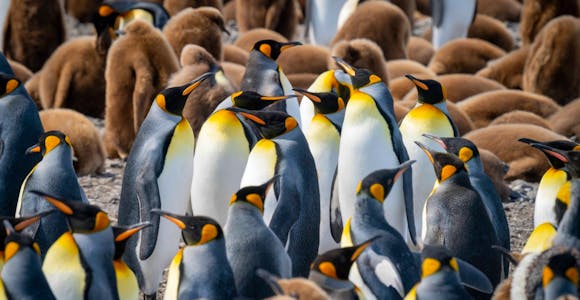
A jewel in Antarctica's crown, South Georgia is one of the world's great wildlife destinations: the Serengeti of the Southern Ocean
Discover More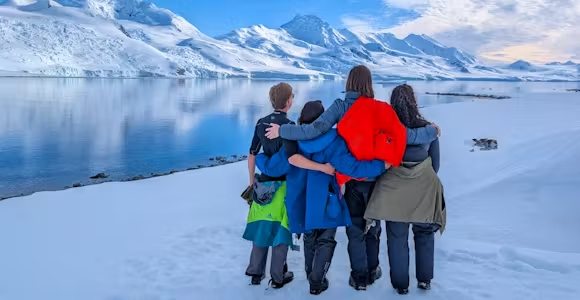
Choosing when to go to Antarctica is a key part of planning a cruise, with each month of the season offering a different side of the continent.
Discover More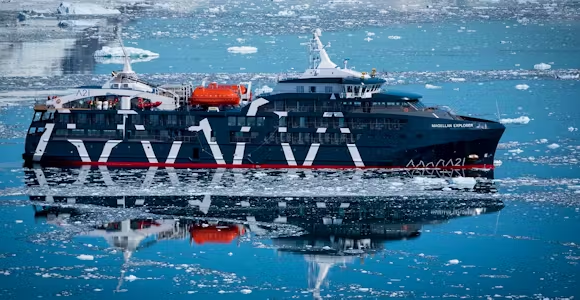
We work with a range of different Antarctic vessels, with expertise across the entire polar fleet, to give you the best choice of ship, cabin and departure date.
Discover MoreWe'll spend some time listening to your aspirations, then discuss the kind of experience that might suit you.
Next we'll discuss the options, shortlist the best trips for you and present you our impartial recommendations.
We'll place a 24 hour hold on your preferred option - without obligation - whilst we talk through the details.
